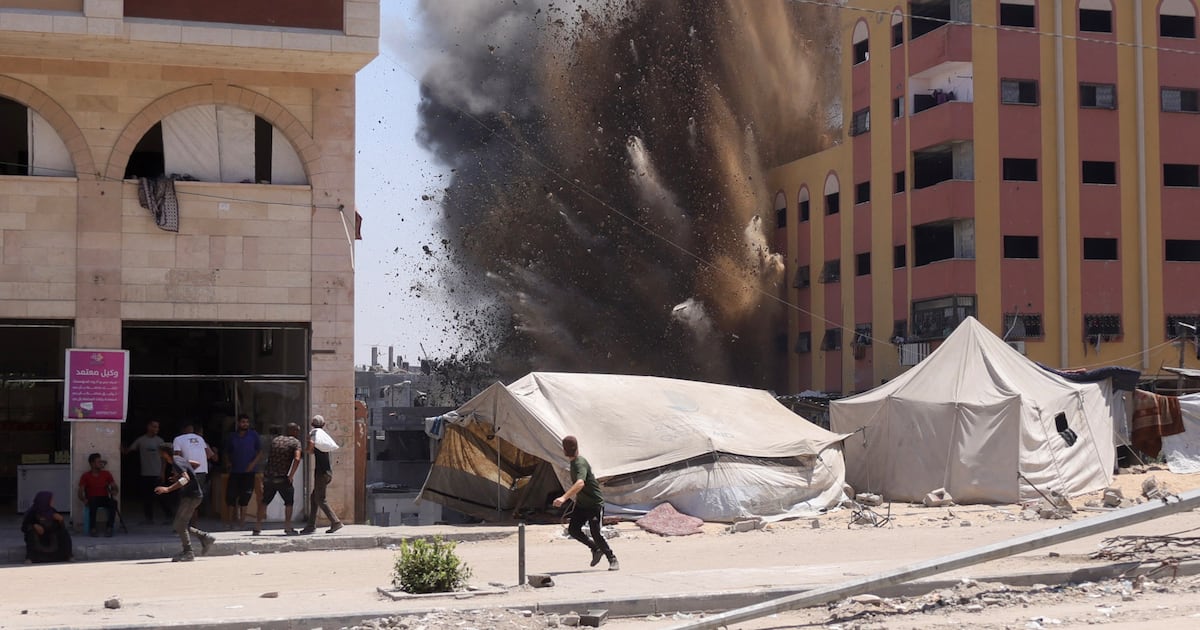The Israeli military maintained its pressure on Gaza City with heavy bombardments overnight, residents said, ahead of a Thursday meeting between prime minister Binyamin Netanyahu and his ministers on plans to seize the enclave’s largest city.
In Gaza City, thousands of Palestinians left their homes as Israeli forces have escalated shelling on the Sabra and Tuffah neighbourhoods.
Some families have left for shelters along the coast, while others have moved to central and southern parts of the enclave, according to residents there.
“We are facing a bitter-bitter situation, to die at home or leave and die somewhere else, as long as this war continues, survival is uncertain,” said Rabah Abu Elias (67), a father of seven.
“In the news, they speak about a possible truce, on the ground, we only hear explosions and see deaths. To leave Gaza City or not isn’t an easy decision to make,” he told Reuters by phone.
Israeli tanks have been edging closer to densely populated Gaza City over the past ten days. Israeli officials have said evacuation notices would be issued to Palestinians there before the military moves in.
Yesterday, an Israeli spokesman said Israel’s military had taken the first steps of a planned operation to take over Gaza City.
Following a clash with Hamas south of Khan Younis in the strip on Wednesday, brig gen Effie Defrin said: “We will deepen the attack on Hamas in Gaza City, a stronghold of governmental and military terror for the terrorist organisation.”
He said troops had already begun circling the outskirts of Gaza City and Hamas was now a “battered and bruised” guerrilla force.
“We have begun the preliminary operations and the first stages of the attack on Gaza City, and already now IDF forces are holding the outskirts of Gaza City,” he said.
The military on Wednesday called up 60,000 reservists in a sign that the government was pressing ahead with the plan, despite international condemnation. Although one military official said most reservists would not serve in combat and that the strategy to take Gaza City had not yet been finalised.
Calling up tens of thousands of reservists is also likely to take weeks, giving time for mediators to attempt to bridge gaps over a new temporary ceasefire proposal that Hamas has accepted, but the Israeli government is yet to officially respond to.
The proposal calls for a 60-day ceasefire and the release of 10 living hostages being held in Gaza by Hamas militants and of 18 bodies. In turn, Israel would release about 200 long-serving Palestinian prisoners held by Israel.
The Israeli government has restated that all of the remaining 50 hostages held by militants in Gaza must be released at once. Israeli officials believe that around 20 of them are still alive.
Mr Netanyahu is scheduled to meet with some cabinet ministers on Thursday to discuss his plan to seize Gaza City, according to Haaretz and other Israeli media, without giving more details.
The plan was approved this month by the security cabinet, which he chairs, even though many of Israel’s closest allies have urged the government to reconsider.
Mr Netanyahu is under pressure from some far-right members of his coalition to reject a temporary ceasefire and instead to continue the war and pursue the annexation of the territory.
Two more people have died of starvation and malnutrition in Gaza in the past 24 hours, the territory’s health ministry said on Thursday. The new deaths raised the number of Palestinians who have died from such causes to 271, including 112 children, since the war began.
Israel disputes malnutrition and starvation figures posted by the Hamas-controlled Gaza health ministry.
United Nations secretary general António Guterres on Thursday called for an immediate ceasefire in Gaza, after Israel announced the first steps of an operation to take over Gaza City.
“It is vital to reach immediately a ceasefire in Gaza,” that was necessary “to avoid the death and destruction that a military operation against Gaza City would inevitably cause,” Mr Guterres said in Japan.
– Reuters
